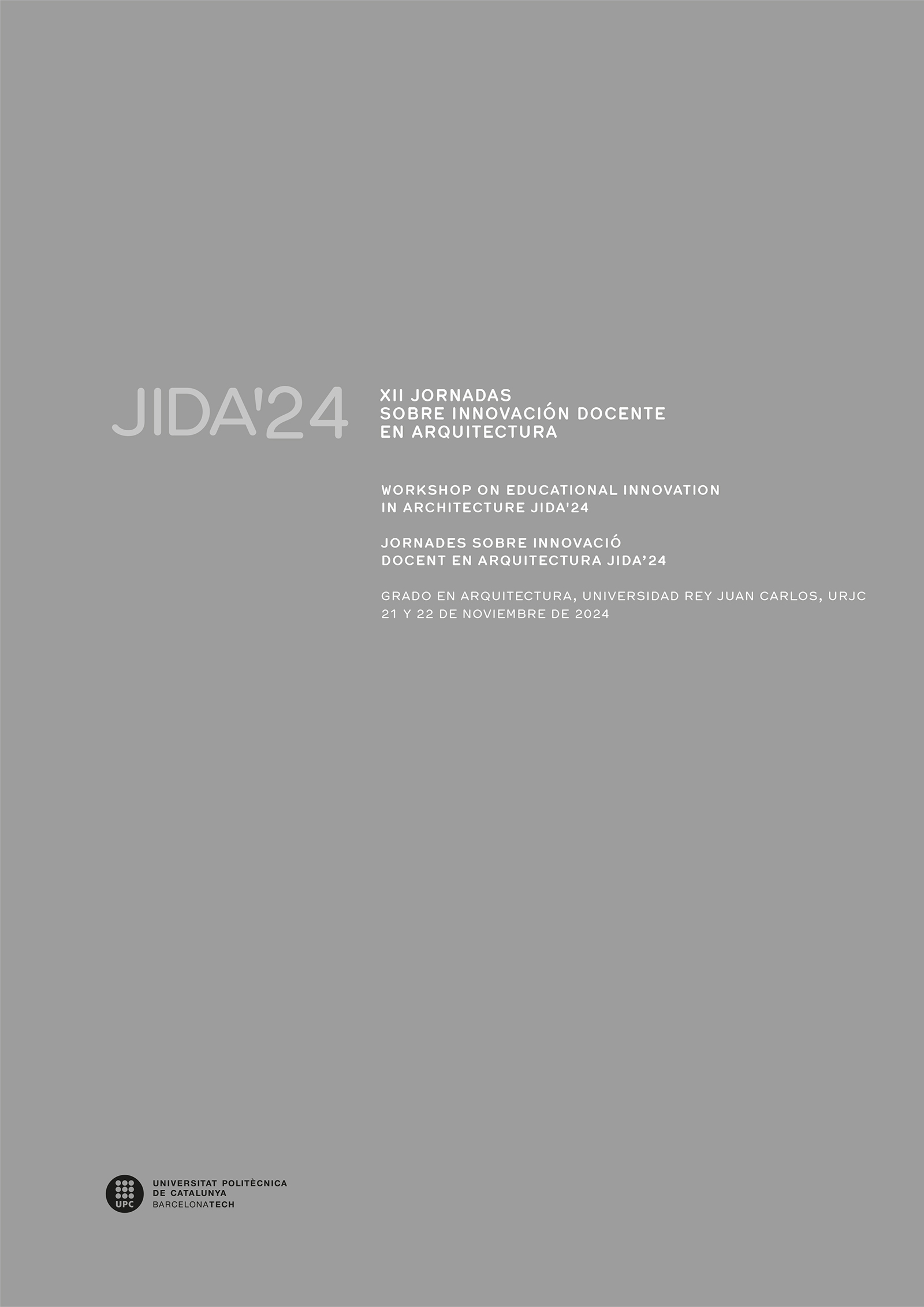Expanded Intelligence: pedagogical explorations of text-image discursive design
p
DOI:
https://doi.org/10.5821/jida.2024.13310Keywords:
Generative AI, Architectural pedagogy, visual narratives, design ethics, digital educationAbstract
This study explores the integration of Expanded Intelligence in architectural design education through an experimental workshop combining generative AI with traditional methods. Inspired by Laura Lio's concept of "shelter for body and imagination," the text-image discursive design approach enabled students to develop innovative architectural narratives fusing visual and textual elements. Results show that AI amplified students' creative capacity, facilitating the generation of speculative and complex solutions. However, challenges emerged in balancing physical and imaginative aspects, and in addressing ethical issues regarding authorship and technological dependence. This study contributes new pedagogical perspectives, proposing a critical and reflective approach in architectural education that prepares future architects to face the challenges of the contemporary biodigital environment through collaboration between human and artificial intelligence.
References
Armstrong, R. 2012. Living Architecture: How Synthetic Biology Can Remake Our Cities and Reshape Our Lives. TED Books.
Braun, V., y Clarke, V. 2006. Using thematic analysis in psychology. Qualitative Research in Psychology, 3(2), 77-101.
Carpo, M. 2017. The Second Digital Turn: Design Beyond Intelligence. MIT Press.
Clark, A. 2008. Supersizing the Mind: Embodiment, Action, and Cognitive Extension. Oxford University Press.
Clark, A., y Chalmers, D. 1998. The extended mind. Analysis, 58(1), 7-19.
Dunne, A., y Raby, F. 2013. Speculative Everything: Design, Fiction, and Social Dreaming. MIT Press.
Gage, M. F. 2019. Designing Social Equality: Architecture, Aesthetics, and the Perception of Democracy. Routledge.
Kemmis, S., y McTaggart, R. 2005. Participatory action research: Communicative action and the public sphere. In N. K. Denzin y Y. S. Lincoln (Eds.), The Sage Handbook of Qualitative Research (3rd ed., pp. 559-603). Sage Publications.
Lío Martorelli, L., Pallasmaa, J., y Mallo, M. 2023. Refugios del cuerpo y la imaginación: biomímesis en arte y arquitectura desde las construcciones de los animales. Ediciones Asimétricas.
Oxman, R. 2017. Thinking difference: Theories and models of parametric design thinking. Design Studies, 52, 4-39.
Picon, A. 2020. The Materiality of Architecture. University of Minnesota Press.
Saghafi, M., Franz, J., y Crowther, P. 2022. A review of current developments in online design education: Findings on the effectiveness of digital tools. International Journal of Technology and Design Education, 32, 2711-2738.
Siemens, G., Gašević, D., y Dawson, S. 2022. Learning Analytics and Knowledge: Education and Learning in the Age of Data. Springer.
Spiller, N. 2006. Visionary Architecture: Blueprints of the Modern Imagination. Thames & Hudson.
Tschumi, B. 1994. Architecture and Disjunction. MIT Press.
Venturi, R., y Scott Brown, D. 2004. Architecture as Signs and Systems: For a Mannerist Time. Harvard University Press.






















